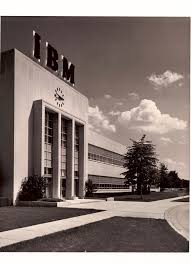Merriam-Webster picked surreal as its 2016 word of the year, and…yeah. At times this year I’ve felt like Alice in Wonderland, and I’ll bet you have too.
One thing remains as true as ever, though: if you’re not learning, you’re not living.
Here are some things I learned this year:
The future is technical communication
 Technology is moving forward at breakneck speed. People want technology. People have different learning styles.
Technology is moving forward at breakneck speed. People want technology. People have different learning styles.
Who can deliver the information people need to make use of, and enjoy, the technology that’s all around them? Technical communicators, that’s who.
That’s the gist of Sarah Maddox’s keynote speech at tcworld India 2016.
I think Sarah is saying that we need continuously to hone the technical part of our job title, while not neglecting the communicator part. And I think she’s absolutely right.
We care a lot about our professional society
 Some of my most popular posts this year dealt with the Society for Technical Communication (STC) and its role in a changing world. How can STC remain relevant when the traditional roles of professional societies are changing? How can it serve a community that’s growing ever more diverse, in terms of the kinds of work we do?
Some of my most popular posts this year dealt with the Society for Technical Communication (STC) and its role in a changing world. How can STC remain relevant when the traditional roles of professional societies are changing? How can it serve a community that’s growing ever more diverse, in terms of the kinds of work we do?
As 2017 begins, STC is looking for a new CEO. Whoever gets the job, and whatever things they choose to prioritize, I hope they’ll appreciate the passion and dedication of STC’s members.
DITA isn’t cheap (but it’s still worth the cost)
 Even as more organizations embrace DITA for developing their content, we hear that DITA is complex and hard to learn. Overcoming DITA’s acceptance hurdles was one of my most commented-on blog posts this year, as was my plea for greater sensitivity to the writers’ learning curve.
Even as more organizations embrace DITA for developing their content, we hear that DITA is complex and hard to learn. Overcoming DITA’s acceptance hurdles was one of my most commented-on blog posts this year, as was my plea for greater sensitivity to the writers’ learning curve.
Yes, DITA is powerful. But it didn’t get that way by being simple. I’ve come to appreciate that writers need time to absorb the underlying principles, which happen to align closely with the principles of good technical writing, and they need time to learn the how-to aspects as well. It’s time well spent, I think.
A leader is a storyteller
 We saw it in this year’s political news: for better or worse, people are drawn to the leaders who tell the best stories.
We saw it in this year’s political news: for better or worse, people are drawn to the leaders who tell the best stories.
As technical communicators, we’re by nature good storytellers.
Does it follow, then, that technical writers have an edge when it comes to being good leaders? I think it does.
Don’t take things too seriously
The year truly has been surreal. Many of our deeply held beliefs — about leaders, about governments, about the course of history — have been challenged if not overturned.
Yet my most-read post in 2016, by far, was a collection of jokes. That taught me not to take things too seriously, and especially not to take myself too seriously.
It reminded me that we’re all human beings. We all need to connect with each other and, sometimes, share a laugh.
I hope I’ve connected with you, at least a few times, in 2016. I hope we’ll continue to connect in 2017. And even share a laugh or two.
Related: Living and learning: 2015



 Technology is moving forward at breakneck speed. People want technology. People have different learning styles.
Technology is moving forward at breakneck speed. People want technology. People have different learning styles. Some of my most popular posts this year dealt with the
Some of my most popular posts this year dealt with the  Even as more organizations embrace DITA for developing their content, we hear that DITA is complex and hard to learn.
Even as more organizations embrace DITA for developing their content, we hear that DITA is complex and hard to learn.  We saw it in this year’s political news: for better or worse, people are drawn to the
We saw it in this year’s political news: for better or worse, people are drawn to the 
